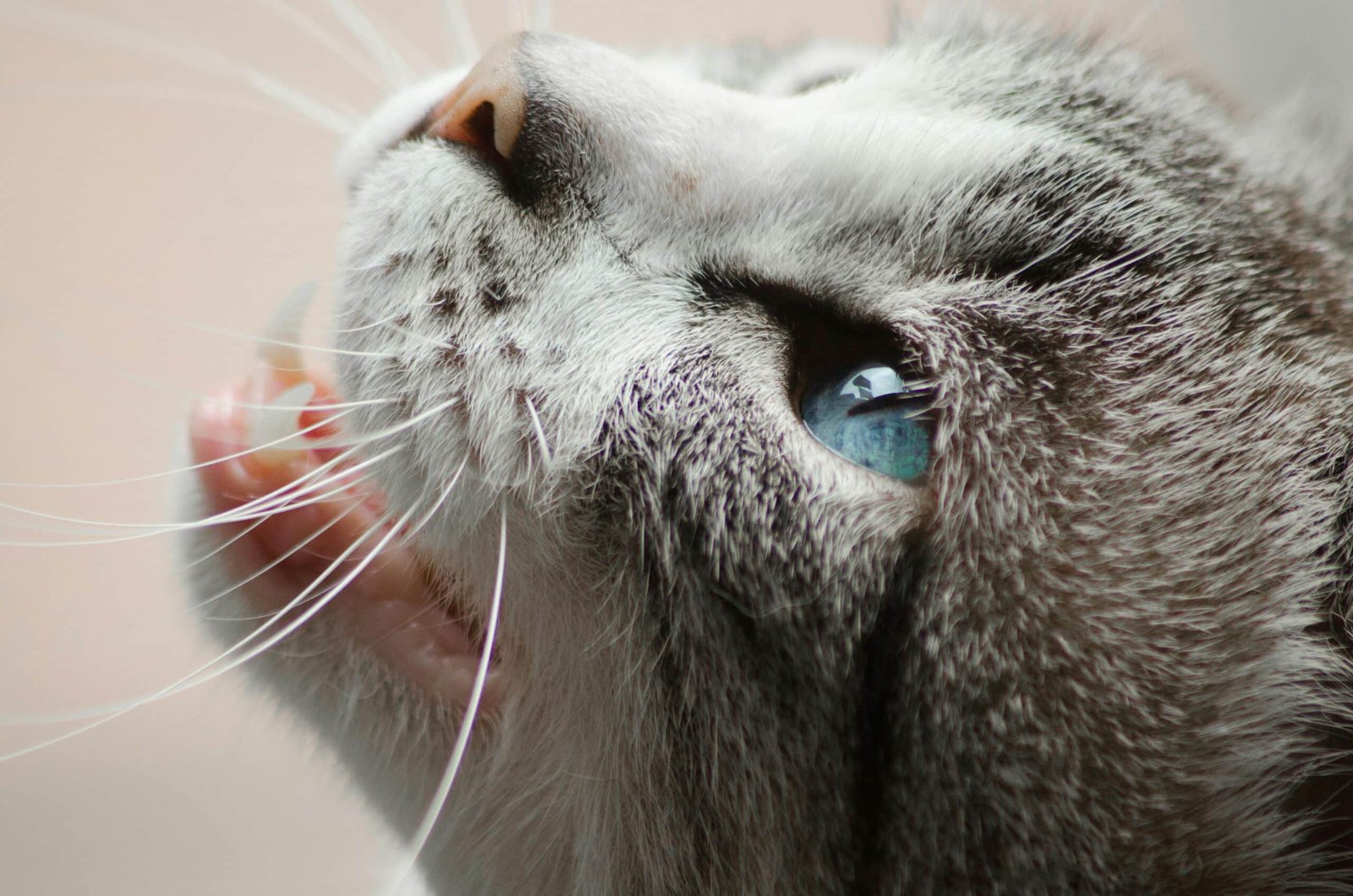Understanding your cat’s dental health is crucial for maintaining their overall well-being. One fundamental aspect of this is knowing the number of teeth an adult cat has and the importance of these teeth in their daily lives. This comprehensive guide explores the structure and number of teeth in adult cats, common dental issues they face, and tips for maintaining your feline friend’s dental health.
The Anatomy of a Cat’s Teeth
Adult cats have a total of 30 permanent teeth. These teeth are divided into four types, each serving a specific function in the cat’s diet and daily activities.
1. Incisors
- Number: 12 (six on the top and six on the bottom)
- Location: Front of the mouth
- Function: Incisors are small teeth used primarily for grooming and picking up small pieces of food. They help cats bite off small bits of meat from bones.
2. Canines
- Number: 4 (two on the top and two on the bottom)
- Location: Immediately next to the incisors
- Function: Canines, also known as fangs, are long and sharp. They are essential for holding and killing prey. They also play a role in defense.
3. Premolars
- Number: 10 (six on the top and four on the bottom)
- Location: Behind the canines
- Function: Premolars are used for shearing and slicing meat. They work together with the molars to break down food into smaller, digestible pieces.
4. Molars
- Number: 4 (two on the top and two on the bottom)
- Location: At the back of the mouth
- Function: Molars are used for grinding food. They are essential for breaking down harder materials into manageable pieces for swallowing.
The Transition from Kitten to Adult Teeth
Cats are born without teeth. Their deciduous (baby) teeth begin to emerge at around two to four weeks of age, and by the time they are six to eight weeks old, they typically have a full set of 26 baby teeth. These baby teeth include:
- 12 Incisors
- 4 Canines
- 10 Premolars
As kittens grow, their baby teeth start to fall out, making way for permanent teeth. This process usually begins around three to four months of age and is typically completed by the time the cat is six to seven months old.
Common Dental Issues in Adult Cats
Just like humans, cats can suffer from various dental problems that can affect their overall health. Regular dental care is essential to prevent these issues.
1. Periodontal Disease
Periodontal disease is one of the most common dental issues in adult cats. It involves the inflammation and infection of the gums and the structures supporting the teeth.
Stages of Periodontal Disease:
- Gingivitis: Early stage, characterized by red, swollen gums that may bleed easily.
- Periodontitis: Advanced stage, where the infection affects the bone and other structures supporting the teeth.
Symptoms:
- Bad breath
- Red or swollen gums
- Difficulty eating
- Drooling
- Loose or missing teeth
2. Tooth Resorption
Tooth resorption is a painful condition where the structure of the tooth breaks down and is reabsorbed by the body. It often affects the premolars and molars and can be difficult to detect without a veterinary examination.
Symptoms:
- Difficulty eating
- Drooling
- Oral pain
- Visible holes or pits in the teeth
3. Stomatitis
Stomatitis is a severe inflammation of the mouth’s soft tissues, including the gums, tongue, and inner cheeks. It can be caused by infections, immune system issues, or dental problems.
Symptoms:
- Severe pain when eating or drinking
- Red, inflamed mouth tissues
- Excessive drooling
- Bad breath
- Weight loss
4. Broken or Fractured Teeth
Cats can break or fracture their teeth due to trauma, such as falls or chewing on hard objects. Broken teeth can lead to pain, infection, and difficulty eating.
Symptoms:
- Visible cracks or chips in teeth
- Swelling around the affected tooth
- Reluctance to eat or chew
- Pain or sensitivity when touching the affected area
Maintaining Your Cat’s Dental Health
Preventive care is essential for keeping your cat’s teeth and gums healthy. Here are some tips to maintain your cat’s dental health:
1. Regular Veterinary Check-ups
Schedule regular veterinary check-ups to monitor your cat’s dental health. Your vet can perform professional cleanings and check for signs of dental issues that may require treatment.
2. Tooth Brushing
Brushing your cat’s teeth regularly can help prevent plaque and tartar buildup. Use a cat-specific toothbrush and toothpaste, and gradually introduce the brushing routine to make your cat comfortable.
How to Brush Your Cat’s Teeth:
- Start by gently lifting your cat’s lips and rubbing their teeth with your finger.
- Gradually introduce the toothbrush and toothpaste.
- Brush in small, circular motions, focusing on the gum line.
3. Dental Treats and Toys
Provide dental treats and toys designed to reduce plaque and tartar buildup. These products can complement regular brushing and professional cleanings.
4. Healthy Diet
A balanced diet is essential for maintaining your cat’s overall health, including their dental health. Some cat foods are specially formulated to support dental health by reducing plaque and tartar buildup.
5. Monitor for Signs of Dental Problems
Keep an eye out for signs of dental issues, such as bad breath, difficulty eating, drooling, or changes in behavior. Early detection and treatment can prevent more severe problems down the line.
The Role of Diet in Dental Health
A proper diet plays a significant role in maintaining your cat’s dental health. Here are some dietary considerations:
1. Dry vs. Wet Food
- Dry Food: Dry kibble can help reduce plaque buildup due to its abrasive texture. However, it should not be the sole method of dental care.
- Wet Food: While wet food is beneficial for hydration, it does not provide the same abrasive action as dry food. A combination of both can be ideal.
2. Dental-Specific Foods
Some cat foods are formulated specifically to promote dental health. These foods contain ingredients that help reduce plaque and tartar buildup and are often designed to be more abrasive to clean teeth as the cat chews.
3. Supplements and Additives
There are various dental supplements and water additives available that can help maintain your cat’s dental health. These products can help reduce plaque and tartar buildup and improve overall oral hygiene.
The Importance of Regular Dental Check-Ups
Regular dental check-ups are crucial for maintaining your cat’s oral health. During these check-ups, your vet will:
- Examine the Mouth: Check for signs of dental disease, such as red or swollen gums, loose teeth, or bad breath.
- Clean the Teeth: Perform a professional cleaning to remove plaque and tartar buildup that cannot be removed by brushing alone.
- Perform X-Rays: Dental X-rays may be needed to detect issues below the gum line, such as tooth resorption or bone loss.
- Provide Treatment: Address any dental issues found during the examination, such as tooth extractions, treatments for periodontal disease, or addressing broken teeth.
Conclusion
Understanding the dental anatomy of your adult cat is essential for providing the best care possible. Adult cats have 30 teeth, each with a specific function that contributes to their overall health and well-being. Common dental issues such as periodontal disease, tooth resorption, stomatitis, and broken or fractured teeth can significantly impact your cat’s quality of life.
By maintaining regular veterinary check-ups, practicing good dental hygiene at home, providing a balanced diet, and being vigilant for signs of dental problems, you can help ensure your cat enjoys a healthy mouth and a happy life. Investing time and effort into your cat’s dental care will pay off in their long-term health and well-being.
- Can Cats Without Teeth Eat Dry Food?
- Cats Without Teeth
- Do Cats’ Teeth Need Special Care?
- Why Do Cats Rub Their Teeth on You?
- How to Keep Your Cat’s Teeth Clean Without Brushing:
- Why Do Cats Grind Their Teeth?
- Why Do Cats Chatter Their Teeth?
- When Do Cats Lose Their Baby Teeth?
- How Often Do Cats Need Dental Cleaning?
- Do Cats’ Broken Teeth Grow Back?
- Cat’s Bottom Teeth: Anatomy, Function, and Dental Care
- How Many Permanent Teeth Do Cats Have?
- How Many Canine Teeth Do Cats Have?
- How Many Front Teeth Do Cats Have?
- How Many Teeth Do Adult Cats Have?
- How Many Teeth Do Cats Have?
Discover more from EMMOCEB
Subscribe to get the latest posts sent to your email.






